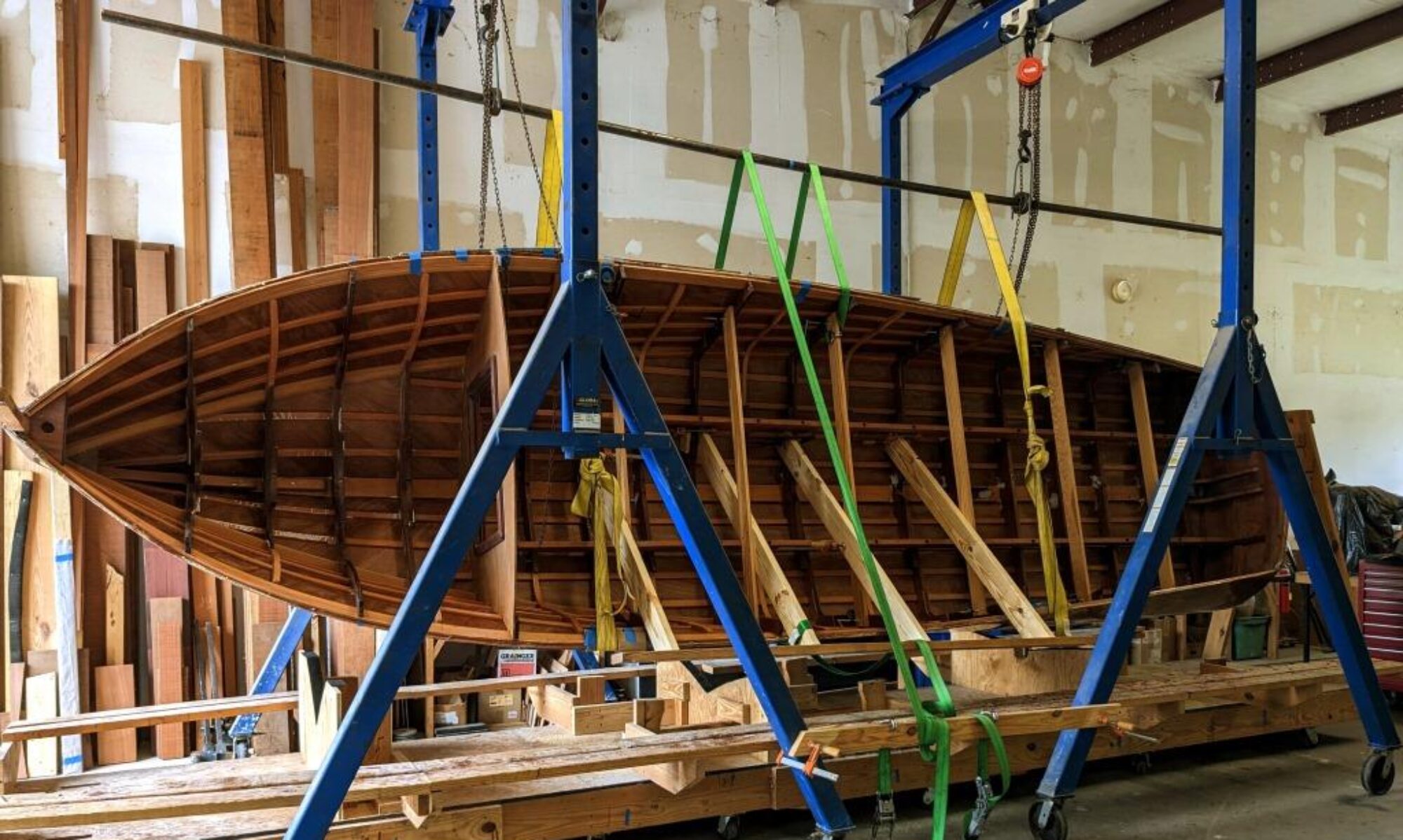
A layer of fiberglass on the bottom serves two purposes. First, it provides a tough protective layer for rough treatment on a trailer or accidental grounding. Second, it holds a nice, thick epoxy layer that makes the bottom more water proof. Nothing is really water PROOF. But epoxy is pretty close. It takes a long time for water to migrate through unbroken epoxy.
It only takes a few days to add this beneficial protective layer, and now is the time!
We used 6 oz. 0-90 bi-axial woven roving. Let’s break this down. Six ounce means the fiberglass cloth weighs 6 ounces per square yard. 0-90 bi-axial means the threads in the cloth intersect at a 90 degree angle. Woven roving means the fabric has a simple over-and under weave to it. This cloth drapes well and will conform to the shape of our bottom.

When you apply fiberglass to anything, it’s held there with some form of resin. In our case, we use epoxy. If you do a good job, the resin fills the weave and displaces the air, making the cloth essentially invisible. It’s really cool how this works.

While the epoxy is still “green” (partially, but not fully, cured), it’s time to trim the edges of the cloth with a sharp knife.

After the first coat of epoxy cures, we can 2-3 more coats to fill the weave and the cloth will disappear completely.
